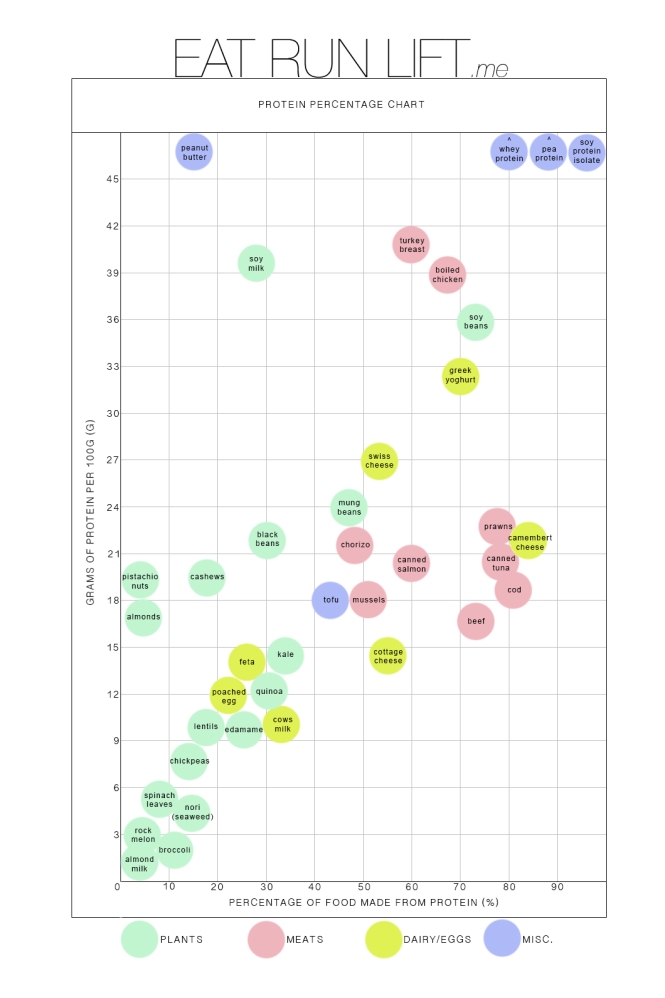Where To Find Protein

Clicking the above chart will allow it to be opened full size for download
Protein isn't just for 'gainz', it's actually essential for your body to function, helps in the repair process after exercise or strenuous activity and even maintains your hair, skin and nails. Every day you should aim to be eating 0.8 grams of protein for every kilogram of your body weight. Proteins give heat and energy to your body and are rarely stored, as your body uses them quite rapidly.
There are two main types of proteins: fibrous proteins and globular proteins. Fibrous proteins can be thought of as having a 'rope-like' arrangement and are usually for structural use: keratin (fingernails + hair), elastin (blood vessels + ligaments), fibrin (blood clots), myosin (muscle tissue), collagen (tendons, bone + tissue). Globular proteins are spherical and transport substances through your blood: haemoglobin (oxygen transport in blood), transferrin (iron transport), insulin (hormone for controlling glucose metabolism), myoglobin (oxygen transport in muscles) and immunoglobins (immune response).
If you have trouble eating as much protein as you should keep this chart handy to help you select options which contain a good amount. Remember that protein isn't the only ingredient that you will need to keep in mind, some foods that are high in protein are also high in fat (you do need some fats in your diet), this is particularly true for foods containing animal products (red meats, cheeses, etc). Vegetables which are high in protein are also generally high in carbohydrates, but they are Low GI carbs which are great for energy and recovery.

